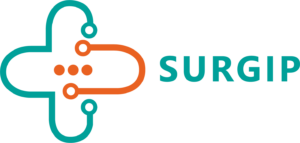The operating room is the heartbeat of any hospital, where critical surgeries take place to save lives and improve patient outcomes. However, behind the scenes, the efficient coordination of these complex procedures relies on advanced technology. Imagine a tool that not only streamlines scheduling processes but also optimizes resource utilization and enhances patient care – that's where operating room scheduling software steps in. In this blog post, we delve into the transformative impact of operating room scheduling software on healthcare efficiency and patient well-being.
The Importance of Efficient Operating Room Scheduling Software
Benefits of Streamlining Scheduling ProcessesOperating room scheduling software plays a crucial role in streamlining the complex process of coordinating surgical procedures. By automating scheduling tasks and providing real-time updates, this software significantly reduces human errors and scheduling conflicts.
Impact on Cost-Effectiveness and Resource UtilizationEfficient operating room scheduling software directly impacts the bottom line of healthcare facilities by maximizing operating room utilization and minimizing idle time. This results in cost savings through optimized resource allocation and reduced overtime expenses.
Stress on the Significance of Precision and Accuracy in SchedulingPrecision and accuracy are paramount in the field of healthcare, especially when it comes to scheduling surgeries. Operating room scheduling software ensures that procedures are scheduled with the right resources, staff, and equipment, leading to improved patient care and outcomes.
Key Features of Operating Room Scheduling Software
-
Automated Scheduling Capabilities
-
Integration with Existing Hospital Systems
-
Real-Time Updates and Notifications for Stakeholders
Considerations for Selecting the Right Operating Room Scheduling Software
-
Scalability and Customization Options
-
Compliance with Regulatory Requirements
-
User-Friendly Interface and Training/Support Provisions
Future Trends in Operating Room Scheduling SoftwareAs technology continues to evolve, operating room scheduling software is expected to embrace advanced features such as artificial intelligence and predictive analytics. The integration of IoT devices and the potential for virtual OR scheduling solutions are paving the way for even greater efficiency and precision in surgical scheduling processes.
For more insights on the latest innovations in healthcare technology, you can explore leading companies like GE Healthcare.
How Operating Room Scheduling Software Enhances Workflow Efficiency
Reduction of Scheduling Conflicts and Delays
Effective operating room scheduling software significantly reduces the occurrence of scheduling conflicts and delays by providing a centralized platform for managing surgical schedules. Through automated conflict detection algorithms and real-time updates, hospitals can ensure smooth and efficient operations without interruptions.
Optimization of OR Utilization and Turnaround Times
Operating room scheduling software optimizes the utilization of OR resources by assigning procedures based on equipment availability, staff expertise, and patient needs. This level of optimization leads to reduced wait times for surgeries, improved patient flow, and increased throughput for healthcare facilities.
Improved Communication Among Staff and Departments
Enhanced communication is a key benefit of utilizing operating room scheduling software. Seamless integration with hospital systems allows for the exchange of real-time updates, notifications, and alerts between surgical teams, administrative staff, and other relevant departments. This streamlined communication fosters collaboration and coordination, ultimately enhancing overall workflow efficiency.
Considerations for Selecting the Right Operating Room Scheduling Software
-
Scalability and Customization Options
-
Compliance with Regulatory Requirements
-
User-Friendly Interface and Training/Support Provisions
For more information on the latest trends and advancements in healthcare technology, you can explore leading companies like Siemens Healthineers.
Case Studies: Successful Implementation of Operating Room Scheduling Software
Overview of Hospitals or Healthcare Facilities Improving Efficiency
In recent years, numerous hospitals and healthcare facilities have successfully implemented operating room scheduling software to enhance their operational efficiency. These case studies serve as testament to the transformative impact of utilizing advanced software solutions in streamlining surgical scheduling processes.
Measurable Outcomes Post Software Adoption
Healthcare organizations that have integrated operating room scheduling software have reported significant improvements in various key performance indicators. These outcomes may include reduced wait times for surgeries, increased OR utilization rates, minimized scheduling conflicts, and enhanced overall patient care delivery.
Lessons Learned and Best Practices for Implementation
Through the examination of successful case studies, valuable lessons and best practices emerge for healthcare providers considering the adoption of operating room scheduling software. Factors such as thorough training for staff, effective change management strategies, and close collaboration with software providers are often highlighted as critical components for a successful implementation.
Future Trends in Operating Room Scheduling Software
-
Advancements in AI and Predictive Analytics
-
Potential for Virtual OR Scheduling Solutions
-
Integration with IoT Devices for Enhanced Efficiency
For more insights into cutting-edge healthcare technology solutions, you can explore offerings from companies like Cerner Corporation.
Tips for Enhancing Operating Room Scheduling Software Efficiency
Regular Performance Monitoring and Optimization
Continuous monitoring of the software's performance is essential for identifying areas where efficiency can be improved. Regularly analyzing data on scheduling accuracy, room utilization rates, and staff allocation can help in optimizing the software for better overall performance.
Utilize Automation Features Where Possible
Operating room scheduling software often comes equipped with automation features that can streamline various aspects of scheduling. Leveraging these automation capabilities for tasks like appointment reminders, resource allocation, and conflict resolution can save time and improve efficiency.
Collaborate with Stakeholders for Feedback and Improvement
Engaging with key stakeholders, including surgeons, nurses, and administrative staff, is crucial for gathering feedback on the software's usability and effectiveness. By incorporating input from those directly involved in the scheduling process, you can tailor the software to better meet the needs of all users.
Invest in Ongoing Training and Support for Users
Providing comprehensive training and ongoing support to users of the operating room scheduling software is vital for ensuring its efficient utilization. Conducting regular training sessions, creating user manuals, and offering responsive technical support can help maximize user proficiency and optimize software performance.
For additional insights on software optimization strategies, you may explore resources from industry leaders such as Oracle Health Sciences.
Key Considerations When Implementing Operating Room Scheduling Software
Integration with Existing Hospital Systems
Ensuring seamless integration of the operating room scheduling software with the hospital's existing systems is crucial for avoiding compatibility issues and maximizing efficiency. Compatibility testing and data migration strategies should be carefully planned to facilitate a smooth transition.
Customization Options for Specific Needs
Every healthcare facility has unique requirements when it comes to scheduling surgeries. Opt for operating room scheduling software that offers customization options, allowing you to tailor the platform to match the specific workflows and preferences of your institution.
Scalability to Accommodate Growth
As healthcare facilities evolve and expand their services, the operating room scheduling software should be able to scale accordingly. Scalability features such as the ability to add new users, rooms, or procedures should be considered to support long-term growth and flexibility.
Compliance with Regulatory Standards
Adherence to regulatory standards and data security protocols is non-negotiable in the healthcare industry. Selecting operating room scheduling software that meets industry-specific regulations such as HIPAA (Health Insurance Portability and Accountability Act) ensures data privacy and compliance with legal requirements.
For further insights on integrating software solutions in healthcare settings, explore resources from industry giants such as Epic Systems Corporation.
Enhancing Patient Care with Operating Room Scheduling Software
Improving Surgical Wait Times
Efficient utilization of operating room scheduling software can substantially reduce patient wait times for surgeries. By optimizing the scheduling process, hospitals can minimize delays and provide timely care to patients in need of surgical interventions.
Enhanced Coordination of Care
Operating room scheduling software facilitates better coordination among healthcare providers involved in patient care. From surgeons and anesthesiologists to nursing staff, the software ensures that all team members are aligned on the schedule, leading to smoother transitions between procedures and improved patient outcomes.
Real-Time Updates for Asynchronous Communication
The ability of operating room scheduling software to provide real-time updates enables asynchronous communication among healthcare professionals. This feature allows for quick adjustments to schedules, urgent notifications, and seamless coordination, even if team members are not physically present in the same location.
Utilizing Analytics for Continuous Improvement
By leveraging the analytics capabilities of operating room scheduling software, healthcare facilities can track key performance metrics and identify areas for improvement. Analyzing data on room utilization, staff efficiency, and patient flow can lead to informed decision-making and ongoing enhancements in patient care delivery.
For further insights on optimizing patient care through innovative software solutions, explore offerings from established companies like IBM Watson Health.
FAQ
How does operating room scheduling software benefit healthcare facilities?
Operating room scheduling software enhances operational efficiency by automating scheduling tasks, reducing conflicts, and optimizing resource utilization, ultimately leading to cost savings and improved patient care.
Is operating room scheduling software suitable for hospitals of all sizes?
Yes, operating room scheduling software is designed to be scalable and customizable to meet the unique needs of healthcare facilities, regardless of their size or patient volume.
What features should I look for when choosing operating room scheduling software?
Key features to consider include automated scheduling capabilities, integration with existing systems, real-time updates, scalability options, and user-friendly interfaces for seamless adoption.
How can operating room scheduling software improve patient outcomes?
By ensuring timely surgeries, minimizing wait times, and enhancing communication among healthcare teams, operating room scheduling software contributes to smoother procedures and better overall patient outcomes.
What are the potential challenges in implementing operating room scheduling software?
Challenges may include staff training and adoption, data migration, integration issues with existing systems, and ensuring compliance with regulatory standards. However, with proper planning and support, these challenges can be effectively addressed.

